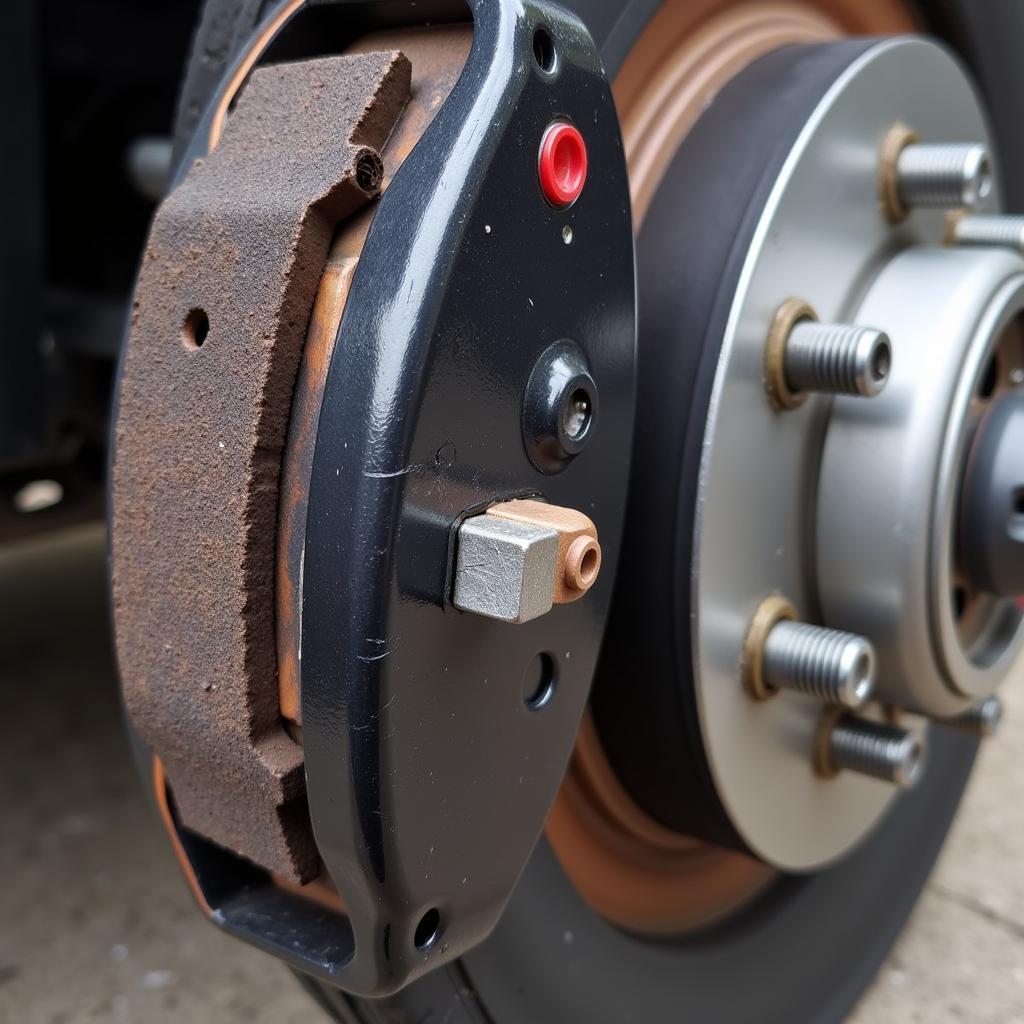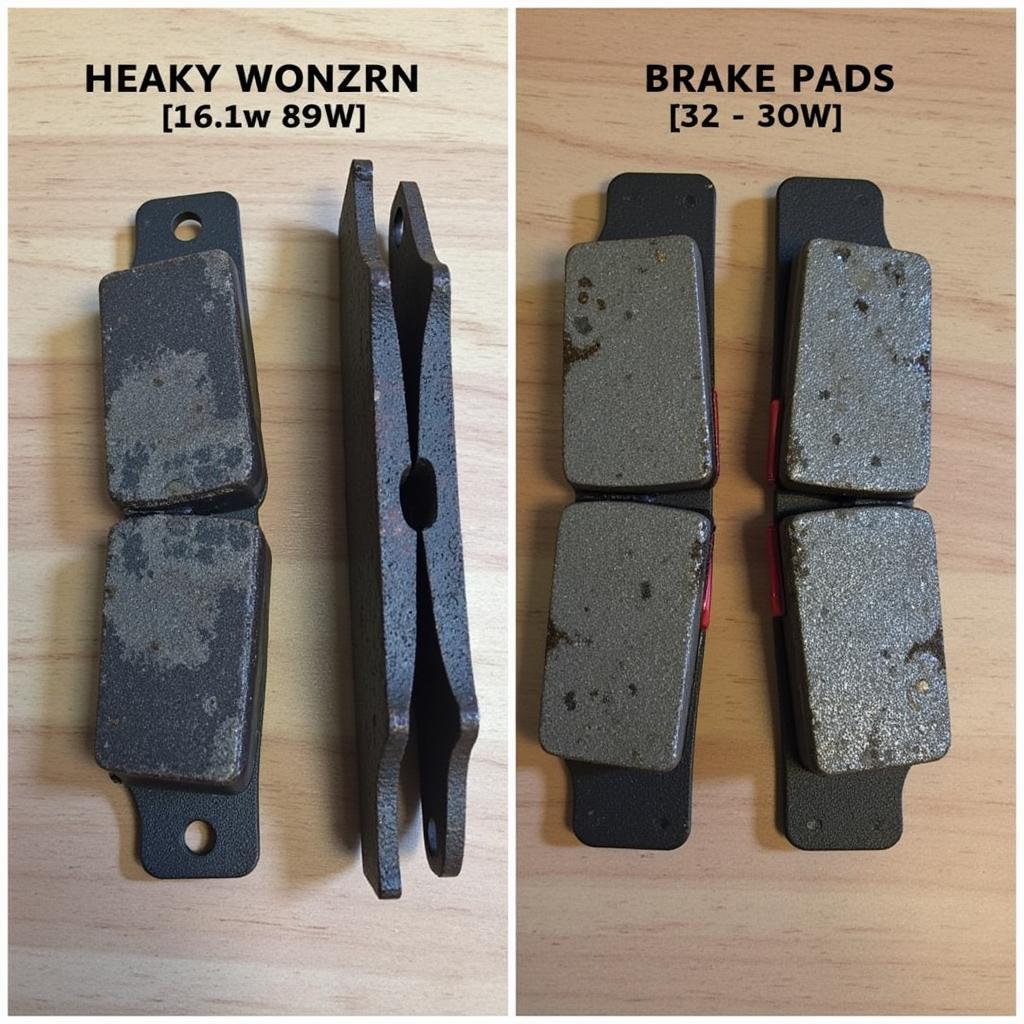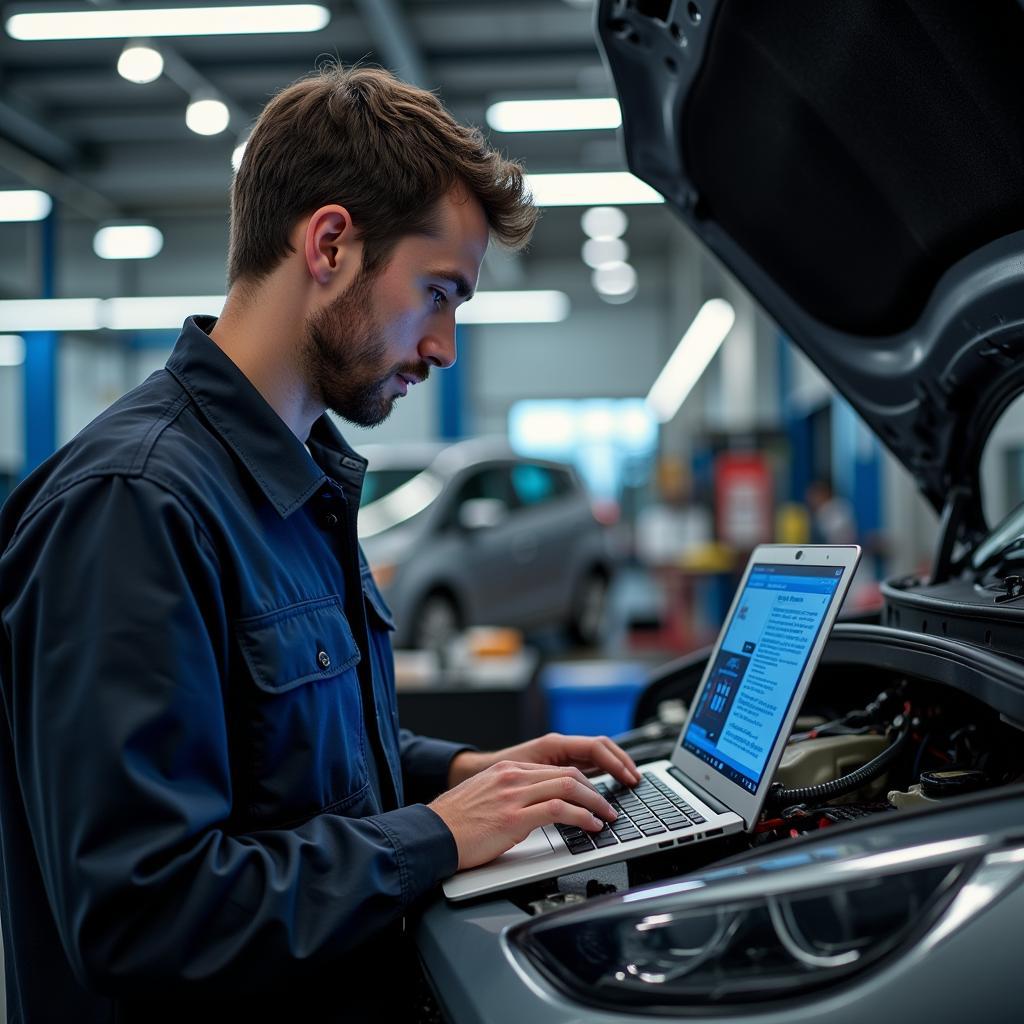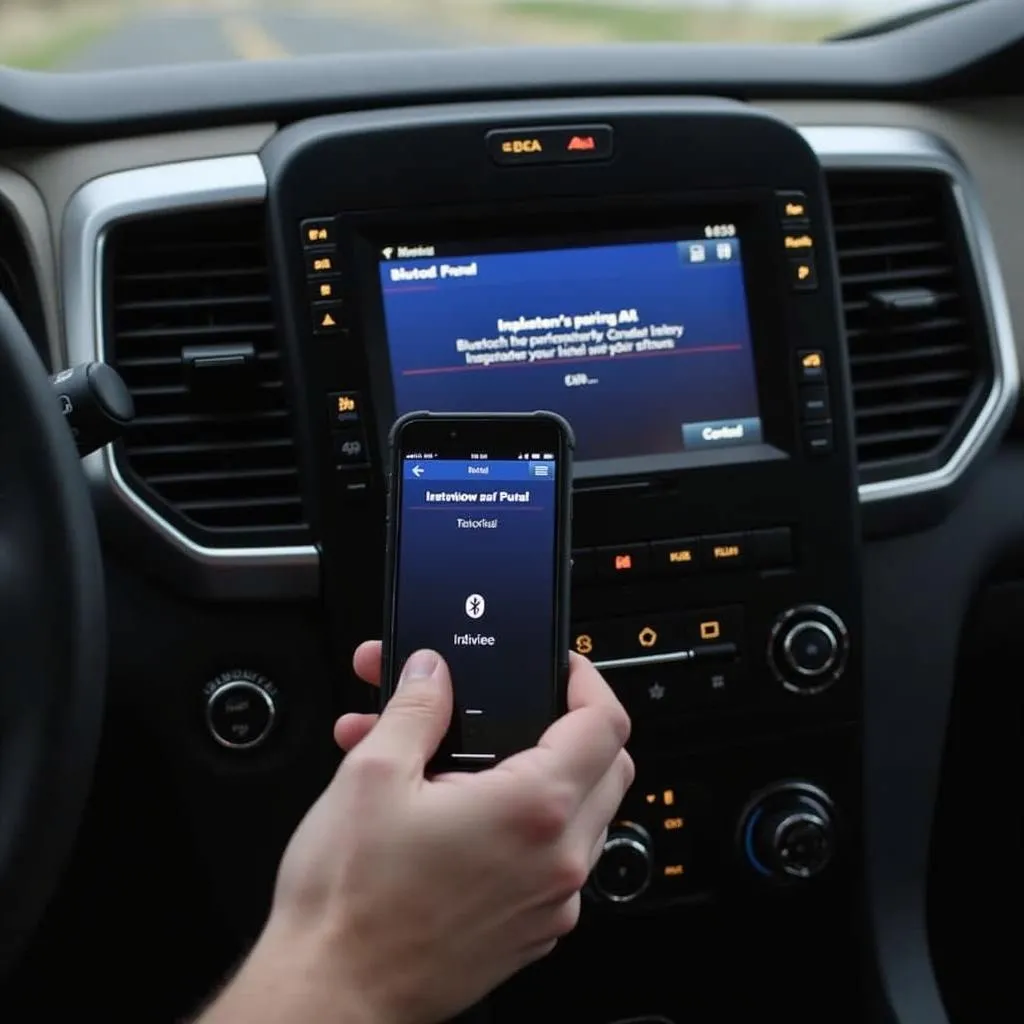An auto brake wear warning light appearing on your dashboard can be a nerve-wracking experience. This warning typically indicates that your brake pads, crucial components of your braking system, have worn down to a point where they need to be replaced. Ignoring this warning can lead to further damage, compromised braking performance, and ultimately, safety risks. This article will delve into the details of auto brake wear warnings, helping you understand what triggers them, how to diagnose the issue, and what steps to take to rectify it.
Understanding Your Car’s Braking System and the Wear Warning
Your car’s braking system is a complex network of components working together to slow down or stop your vehicle. At the heart of this system are the brake pads, which press against the brake rotors to create the friction needed for braking. Over time, brake pads wear down due to this constant friction.
To alert you before the brake pads wear down completely, most modern vehicles are equipped with a brake wear indicator. This indicator is often a small metal tab embedded within the brake pad material.
Common Causes of an Auto Brake Wear Warning
While worn-out brake pads are the most common reason for the warning light, several other factors can contribute to this issue:
-
Worn Brake Pads: As mentioned, this is the most frequent culprit. The brake wear indicator makes contact with the rotor when the pad material is significantly worn, triggering the warning light.
-
Damaged Brake Pad Sensor: The brake pad wear sensor itself can sometimes be damaged or broken, causing a false warning light.
-
Worn Brake Rotors: While less common, excessively worn brake rotors can also trigger the brake wear warning light.
-
Low Brake Fluid: Low brake fluid level is a serious issue that can also illuminate the brake warning light, often in conjunction with the brake wear warning.
-
Electrical Issues: In some instances, a malfunctioning sensor or wiring issue in the braking system can trigger a false warning.
 Brake Pad Wear Sensor
Brake Pad Wear Sensor
Diagnosing the Brake Wear Warning
If your auto brake wear warning light comes on, it’s crucial to diagnose the issue promptly. Here’s a step-by-step guide:
-
Check Brake Fluid Level: Park your car on a level surface and locate the brake fluid reservoir under the hood. The reservoir will have a “min” and “max” marking. If the fluid level is below the “min” mark, it needs to be topped up. Remember, low brake fluid often indicates a leak, requiring immediate professional attention.
-
Inspect the Brake Pads: If your brake fluid level is normal, the next step is to visually inspect your brake pads. You might need to remove the wheel to get a clear view. Look for significant wear on the pad material. A general rule of thumb is to replace brake pads when they are worn down to about ¼ inch thickness.
 Worn Brake Pads vs New Brake Pads
Worn Brake Pads vs New Brake Pads
- Listen for Unusual Noises: Unusual noises while braking, such as screeching, grinding, or scraping, can also indicate worn brake pads or other brake system problems.
What to Do When You See the Auto Brake Wear Warning
-
Do Not Ignore the Warning: Ignoring a brake wear warning can lead to more severe and costly repairs down the line.
-
Schedule an Inspection: If you’re unsure about the cause of the warning light or uncomfortable inspecting the brake system yourself, it’s always best to schedule an inspection with a qualified mechanic. They have the expertise and tools to accurately diagnose and address any issues.
-
Address the Issue Promptly: Whether it’s replacing worn brake pads, addressing a brake fluid leak, or fixing a faulty sensor, act quickly to rectify the problem to maintain your safety and the optimal performance of your vehicle.
Remote Diagnostics and Software Solutions for Brake Issues
Advancements in automotive technology have paved the way for remote diagnostics and software solutions that can identify and sometimes even resolve certain car problems, including those related to the braking system. Here’s how they work:
-
Remote Diagnostics: Some car manufacturers and specialized service providers offer remote diagnostic services. By connecting to your vehicle’s onboard computer system wirelessly, technicians can retrieve diagnostic trouble codes (DTCs) related to your brake system. This allows them to understand the nature of the problem and advise you on the necessary course of action.
-
Software Updates: In some cases, brake system issues may arise from software glitches or outdated software versions in your car’s electronic control units (ECUs). Remote software updates can be installed to rectify these issues and improve the performance of your braking system.
 Mechanic Performing Remote Diagnostics
Mechanic Performing Remote Diagnostics
It’s important to note that while remote diagnostics and software solutions offer a convenient way to address certain automotive issues, they may not be applicable to all brake problems. Physical inspection and repair by a qualified mechanic are still often necessary for accurate diagnosis and effective resolution.
FAQs about Auto Brake Wear Warning
1. How long can I drive with the brake wear warning light on?
It’s not advisable to drive with the brake wear warning light on. The light indicates your brake pads are nearing the end of their service life and require immediate attention. Continuing to drive can further damage your braking system and compromise safety.
2. Can I replace my brake pads myself?
While it’s possible to replace brake pads yourself if you have mechanical skills and the right tools, it’s generally recommended to have this service performed by a qualified mechanic. Brake systems are critical for safety, and improper installation can have serious consequences.
3. How much does it cost to replace brake pads?
The cost of brake pad replacement varies depending on your vehicle’s make and model, the type of brake pads used, and labor costs in your area.
4. Can driving habits affect brake pad wear?
Yes, driving habits like frequent hard braking, riding the brakes, and city driving with a lot of stop-and-go traffic can accelerate brake pad wear.
5. How often should I have my brakes inspected?
It’s a good practice to have your brakes inspected at least once a year or every 12,000 miles, even if you don’t notice any issues. Regular inspections can help identify potential problems early on.
Conclusion
The auto brake wear warning light is a crucial safety feature in your vehicle. Understanding what triggers this warning and how to respond is essential for maintaining your safety on the road. By heeding the warning and taking prompt action, you can ensure optimal braking performance and prevent potentially dangerous situations. If you’re ever unsure about the condition of your brakes, err on the side of caution and consult with a qualified mechanic. For certain brake-related issues, explore the potential of remote diagnostics and software solutions, but always prioritize professional assessment when necessary. By staying informed and proactive, you can enjoy peace of mind knowing your vehicle’s braking system is in top condition.


